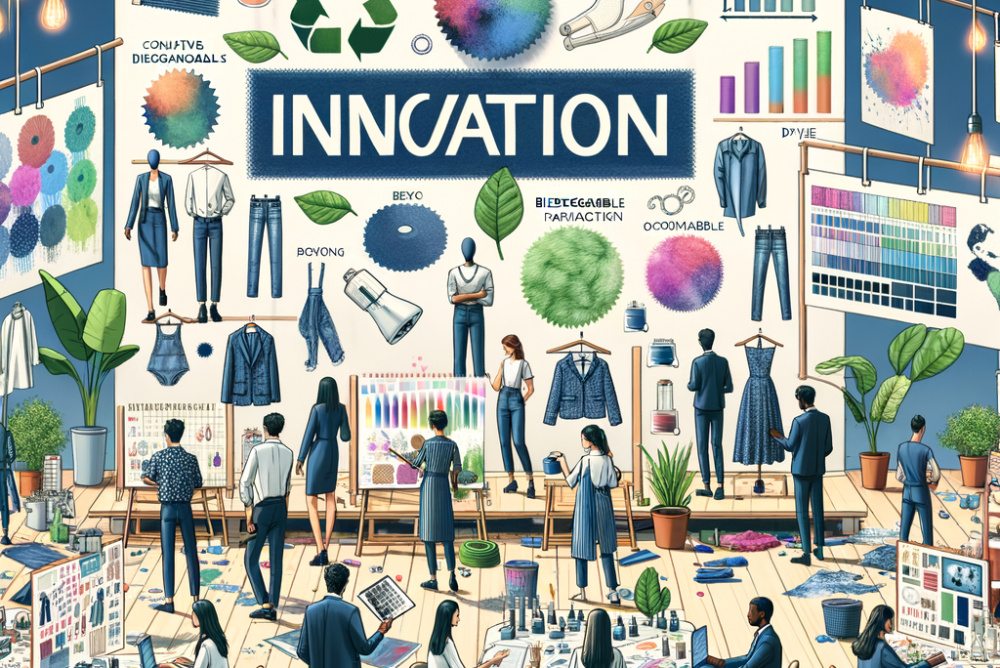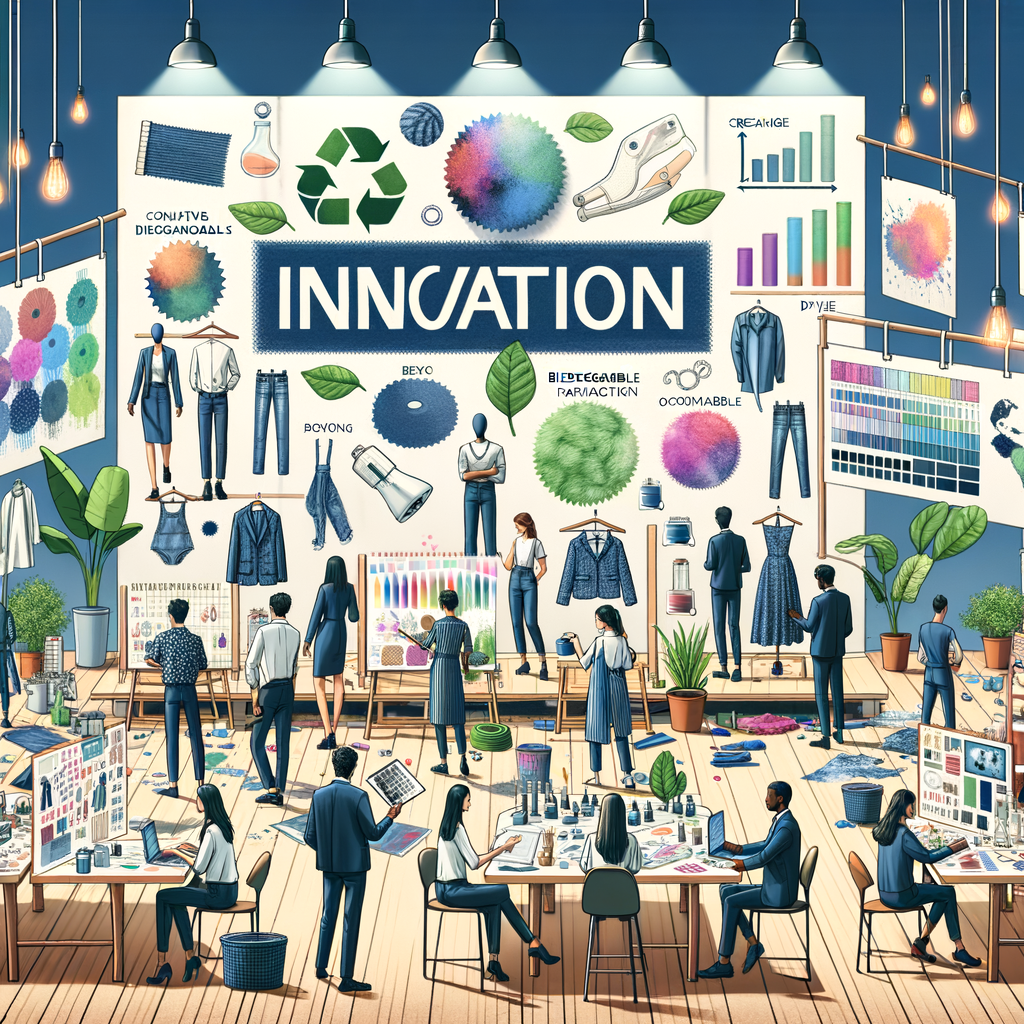Innovating Sustainable Fashion: How Brands are Revolutionizing Eco-Friendly Products


The fashion industry is increasingly focused on integrating sustainability into product development. Sustainable product development aims to reduce the environmental and social impacts of clothing production while still creating appealing and functional products.
The typical lifecycle of fast fashion garments – from raw material extraction, to manufacturing, distribution, consumer use, and disposal – generates immense waste and pollution. For example, textile dyeing is the world’s second largest polluter of clean water. Rapid consumption and disposable culture also deplete finite resources and create overflowing landfills.
However, sustainable product development principles can help the fashion industry reduce its ecological footprint. The core goals are to:
- Source environmentally friendly materials like organic cotton, recycled textiles, low-impact dyes
- Adopt manufacturing processes that minimize water and energy use
- Ensure fair labor conditions across the supply chain
- Design durable, timeless garments
- Optimize logistics for efficiency
- Educate consumers on clothing care and recycling
Implementing sustainability in product development presents complex challenges. But leading fashion brands have demonstrated it is possible to produce stylish, affordable clothing more responsibly and ethically. Inditex, H&M, Eileen Fisher, and Patagonia are examples of companies integrating environmental and social stewardship into products.
Sustainable product development will continue growing as its business case strengthens. Research finds consumers are increasingly factoring sustainability into purchasing decisions. Governments are also enacting regulations to compel greener industry practices. Brands that transform product development early-on will gain an edge in the evolving fashion marketplace.
Challenges in Implementing Sustainability
While the fashion industry is gradually embracing sustainable product development, integrating these practices comes with substantial challenges. Some of the major obstacles include:
Sourcing Sustainable Materials
Transitioning to eco-friendly materials like organic cotton, recycled polyester, and low-impact dyes can be difficult logistically and financially. These materials are often more expensive or available in smaller quantities. Strong demand can outpace supply. Identifying trusted suppliers worldwide takes considerable vetting and coordination.
Managing Costs
Sustainable fibers, eco-friendly chemicals, ethical factories, and other green upgrades typically increase product costs. These expenses may be passed to consumers through higher price points. Brands must weigh pricing competitively while still covering elevated sourcing and manufacturing costs.
Changing Long-Standing Industry Practices
Much of the fashion industry still operates on low-cost, high-volume models with fast turnarounds. Shifting entrenched systems to more sustainable workflows faces inertia. However, brands leading the way are demonstrating sustainable product development can work at larger scales.
Limited Recycling Technology
While textile-to-textile recycling technology is advancing, many fabrics still end up in landfills or incinerators after use. More innovation is needed to capture, separate, process, and reconstitute all garment materials into new products.
Consumer Adoption
Despite growing environmental consciousness, a significant portion of consumers still prioritize low prices over sustainability. Brands must balance educating shoppers on sustainability’s importance with keeping fashion affordable and accessible.
Collaborating across the fashion industry’s complex global supply chains is imperative to scale sustainable product development. With persistence, innovation and strategic partnering, the obstacles are surmountable. Implementing sustainability ultimately benefits both business and planet. The following chapter will highlight proven strategies and solutions fashion brands can leverage on this vital journey.
Key Strategies for Sustainable Product Development
Fashion brands are deploying various strategies to integrate sustainability across the product lifecycle. Some of the most impactful approaches include:
Design for Durability, Recyclability
Creating long-lasting style and quality allows consumers to wear items longer. Choosing recyclable materials and easy disassembly designs simplifies reusing components in new products.
Use Eco-Friendly Materials
Replacing conventional cotton, leather, and synthetics with organic, recycled, and low-impact alternatives significantly reduces environmental footprints. Pioneering brands are even using wood pulp, pineapple leaves and mushroom roots.
Reduce Waste in Production
Pattern-making techniques like zero-waste and cut-order help minimize the fabric discarded in manufacturing. Eco-friendly processing methods also cut water, energy and chemical usage.
Work Closely with Supply Chain Partners
Collaborating deeply with materials suppliers, manufacturers, distributors and recyclers allows full integration of sustainability. Strong partnerships enable innovation, compliance and lasting change.
Optimize Logistics
Steps like strategic facility locations, efficient transport routes, packaging reduction and low-emission delivery methods streamline distribution impacts.
Educate Consumers
Brands play a key role in helping shoppers understand sustainability benefits and how to care for items responsibly. Clear product labels, online content and in-store displays provide guidance.
Leverage Sustainability Certifications
Trusted third-party standards like GOTS (Global Organic Textile Standard) and BCI (Better Cotton Initiative) validate apparel sustainability claims that consumers increasingly demand.
Brands combining several of these strategies in a holistic way see the greatest benefit. However, sustainability should be tailored for each company’s unique capabilities. Every step forward makes a meaningful difference. Even small changes by many brands and suppliers add up to drive positive progress for the whole fashion industry.
Brand Examples Leading the Way
A growing number of fashion brands large and small are paving the way in sustainable product development. Their initiatives demonstrate that reducing environmental and social impacts is achievable at scale. Some sustainability leaders in the industry include:
H&M
The fast fashion giant aims to use 100% recycled or sustainably sourced materials by 2030. Partnerships like the World Recycle Week campaign educate consumers on recycling over 3,000 tons of garments annually.
Patagonia
Their innovative Synchilla fleece jackets utilize recycled plastic bottles and worn-out garments. Patagonia also offers comprehensive repair, reuse and recycling programs.
Stella McCartney
In addition to leather-free and vegan materials, this luxury brand uses renewable energies, forest-friendly viscose and recycled polyester in its factories.
Levi’s
The denim icon makes jeans utilizing less water and chemicals. Initiatives like the Cotton’s Blue Future partnership promote sustainable agriculture practices.
Zara
Inditex’s powerhouse brand offers extensive clothes recycling in stores. Zara also uses eco-friendly packaging and pledges 80% sustainably processed cotton by 2025.
Eileen Fisher
This ethical fashion pioneer integrates organic linen, Tencel, and recycled fibers into timeless, minimalist designs. The company offers renewable energy credits with each purchase.
Beyond individual company efforts, collaborative industry groups are also driving progress. The Sustainable Apparel Coalition, Zero Discharge of Hazardous Chemicals, CanopyStyle and the Ellen MacArthur Foundation’s Make Fashion Circular are leading examples.
With sustainability advancing from niche to norm, more brands are realizing they must adopt ethical practices to remain competitive. Consumers, employees and investors are demanding change. What was once considered a business cost is now an opportunity for growth by deeply integrating environmental and social stewardship into products.
Looking Ahead: The Future of Sustainability in Fashion
Sustainable product development is rapidly transforming from just a trend into an integral part of the fashion industry. Looking ahead, sustainability will continue progressing through several key shifts:
- Predictions for how sustainability will transform fashion
- Role of technology and innovation
- Impact on consumers and shopping habits
More brands across market segments will integrate sustainability into core business operations. Consumers will increasingly demand ethical practices before making purchases. Legislation and trade policies will set higher environmental and labor standards. Supply chains will adopt greener chemistries, processes and transparency.
Advancing technologies will enable greater sustainability. Recycling systems will improve through machine learning optimization. Blockchain will enhance supply chain traceability. Material and biotechnology breakthroughs will provide novel eco-options like lab-grown silk or natural dyes from food waste.
Shoppers will gravitate towards “ethical fashion” valuing quality craftsmanship, timeless style and environmental stewardship. Rental, resale, repair and recycling will gain popularity over fast disposal. Fashion e-commerce will incorporate sustainability ratings and certifications to guide purchases.
In the end, sustainability must transition from a niche offering to the new normal across the entire fashion ecosystem worldwide. This monumental shift requires collaboration among brands, suppliers, governments and consumers alike. While challenges remain, the clothing industry is recognizing its obligation to protect the planet and people behind our garments.
Conclusion
Implementing sustainable product development is an imperative transformation for the fashion industry to undertake. While the movement faces obstacles, more and more brands are proving it is achievable and commercially viable.
Sustainability cannot be an afterthought or marketing ploy. It must be woven into the core of business strategy and operations. When diverse stakeholders across the apparel lifecycle collectively commit to sustainability, progress at scale is possible.
The strategies and solutions highlighted in this article, from eco-materials to consumer education, represent steps any fashion company can begin taking today. Small changes by many accumulates to large impact overall. Prioritizing ethics and stewardship ultimately creates value for both business and society.
The fashion industry has a profound opportunity to drive positive social and environmental change. Sustainable product development preserves finite resources, protects vulnerable workers, and sets standards for other sectors to follow. By embracing sustainability, fashion can help build a cleaner, more just world for future generations.
The journey requires persistence, imagination and collaboration. But pioneering brands have demonstrated a future for fashion where style and sustainability go hand-in-hand. Consumers are hungry for clothes that reflect their values. With innovative thinking and determined action, our closets can become a force for good. The ethical fashion revolution is underway – will you join in?





-500x500.jpg)
-500x500.jpg)
-500x500.jpg)
-500x500.jpg)
-500x500.jpg)